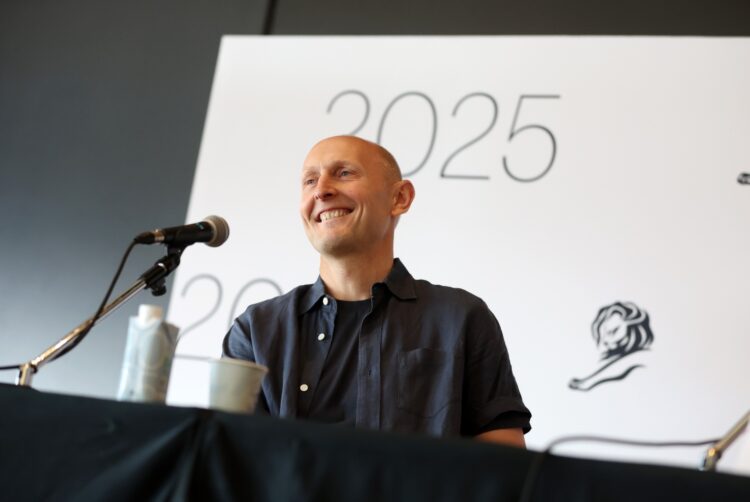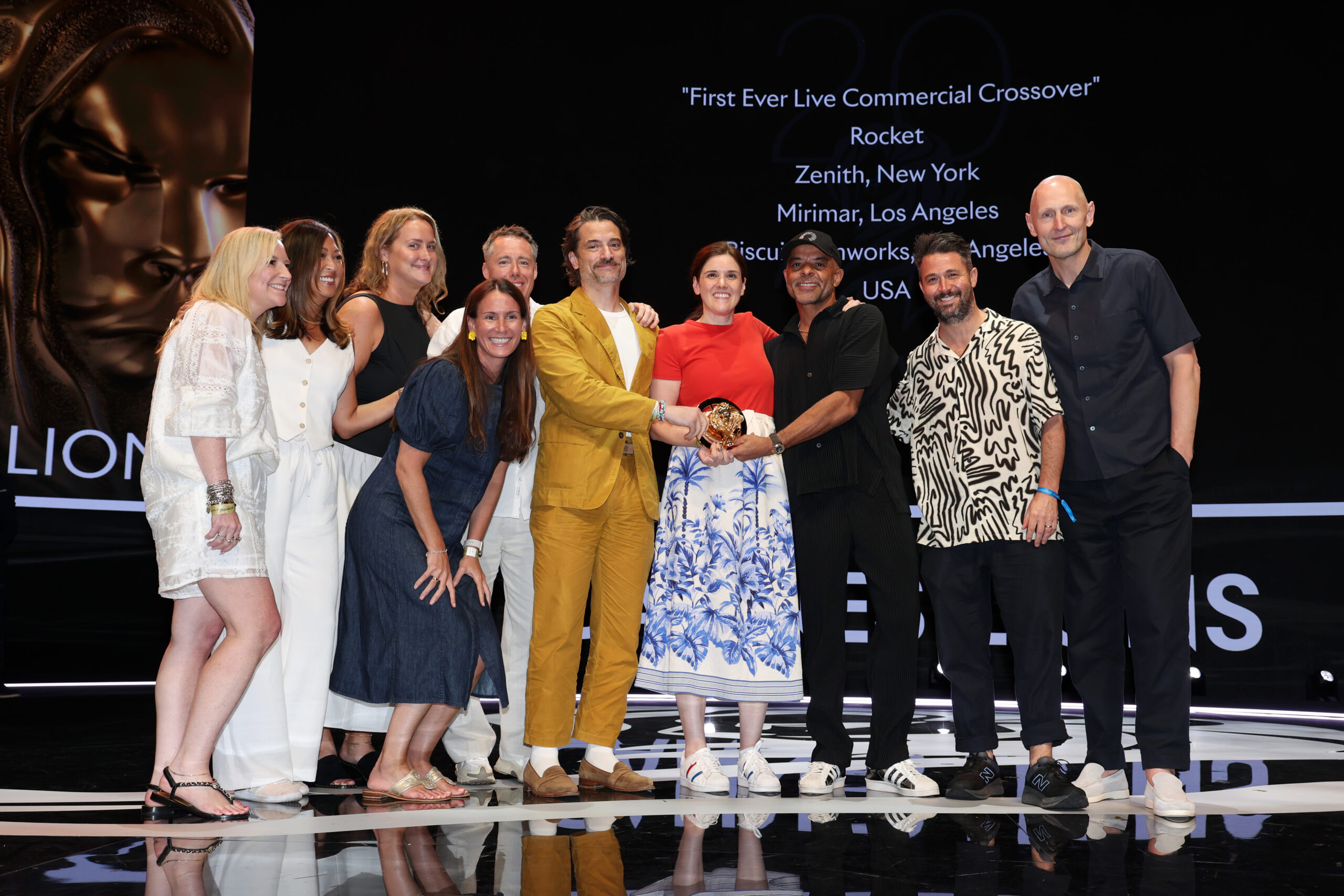How Cannes Media Lions reflect the industry’s inflection point

Opinion
Dan Clays, CEO of Omnicom Media Group for the EMEA region and president of this year’s Media Lions, takes us inside the judging process and finds a changing industry with expanding opportunity for media.
Having worked in the media industry for 25 years, I consider myself a huge champion of the creative power of media and the role data and technology can play in building transformational experiences for brands.
So it was a real privilege to be the president of the Media Lions jury in Cannes in 2025, and immerse myself in a treasure chest of work from brands and agencies from around the world; all underlining the power of media to move people and drive business growth.
It may be a cliché to say but it doesn’t make it any less true, I was genuinely struck by how global Cannes Lions has become: there were more than 2,000 entries in the Media Lions this year, coming from 67 countries — up 9% on the previous year.
Our jury was similarly diverse in its make-up — from Argentina and Brazil to India, the UAE to Ghana and Australia, and the UK to the US — and the local perspective was often vital in understanding important nuances within the work.
The judging starts several weeks before the festival, with each juror (from a short-listing jury and an awarding jury) reviewing around 600 entries in the run up. My daily fix was around 30 entries a day.
Rules of engagement
On arrival Saturday morning, we set to work settling on the final Shortlist — 213 entries in our case — and then over Sunday and late into Monday discussing, testing and then agreeing what lands Bronze, Silver, Gold and potentially a Grand Prix.
We set some important criteria up front in terms of what we wanted to see from the Media Lions in 2025, I think influenced by the exciting inflection point media is at and the expansive aperture media is today.
Firstly, the work had to represent media as the creative force, not just the creative itself.
Originality, distinctive ideas were a given — this is Cannes Lions — but we wanted to showcase the importance of media in that equation and modern media craft. Our mission was to recognise work that in future years would reflect on where media was headed in 2025.
Where technology was deployed, we looked for it to be balanced with human ingenuity. And a non-negotiable: we would only medal work that delivered sizeable impact that could be measured back to the idea and the clients’ business objectives.
The judging itself was weighted as follows: 30% insight and idea; 30% media strategy and targeting; 20% media execution; 20% impact and results.
Our intent was to create a portfolio of winning work that would spark conversation and provide signals and inspiration for marketers and agencies.
Dove takes Media Lion Grand Prix for ‘Refined for the AI Era’
Trends within the work
Over the course of the judging, and across the short-list of campaigns, we saw some noticeable trends.
The power of live: With the prevalence of on-demand content and the growth of streaming, the significance of live content at scale to not only provide high reach, high impact moments but also engage audiences in new ways.
Rocket Mortgages did not just appear in the Superbowl but went from a 15-second TV ad that then flowed directly to a live broadcast sing-along in the stadium featuring the soundtrack of their TV ad — connecting audiences at home with a bold live experience.
Mercado Libre’s Coupon Rain took advantage of the largest televised and reported on game of football in Argentina by printing coupon codes on the shiny ticker tape that fell on the winning team as they were celebrating.
The next day, they ran ads around all the many photographs of the winning team across digital and print media, inviting audiences to use the code that was evident on their ecommerce site. Genius.
This was also an example of another reoccurring theme — truly connected commerce. Not treating commerce and retail media as a lower funnel mopping up of sales, but building smart, engaging commerce mechanics into campaigns to drive brand engagement.
We saw brands capitalising on nostalgia by recycling and reclaiming media assets from their recent past. Skol, a beer brand losing share in Brazil and growing frustrated with paid creators working across the category, identified that the vast content featuring their brand in old social posts could be resurfaced with a small hack on the platforms by inviting people to add #retroad to their old posts.
Similarly, Mentos (you will remember from the days of exploding coke bottles) used the code from old YouTube videos to capture the attention of gamers on Fortnite, and Budweiser created an ecommerce marketplace to allow people to sell old merchandise, in doing so launching a new media platform for the brand.
This hacking, entrepreneurial mindset featured in much of the work. We saw brands navigating algorithms on digital platforms in unexpected ways, and in the physical world, brands creating entirely new media in places and spaces where it did not previously exist.
Cannes 2025 reflections: Don’t throw the effectiveness baby out with the bathwater
Unpacking the big winners
AI was inevitably ubiquitous and in every entry Cannes Lions asked for transparency around usage.
Dove’s Grand Prix winning work Real Beauty AI provided a response to insight that the visual perfection associated with GenAI is causing many women to feel compelled to alter personal representation.
And so Dove worked with Pinterest to retrain the algorithm to elevate real beauty content which was then broadcast across all media channels. More specifically in relation to AI, there was a strong sense that we were now beyond AI “just because”, and most applications were in service of a strategy or idea.
From Pinterest to Reddit, mastery of audience behaviour on social and community platforms and how to crowd-source influence beyond creators was behind two of the biggest winners this year.

Clays (left) with Rocket’s ‘First Ever Live Commercial Crossover’ winners.
The Gold Lion winning Redditor campaign for Skoda Octavia by PHD UK was a brilliant example of how brands can tap into passion-driven communities, finding a subreddit of 300,000 Skoda Octavia fans who were mobilised to create a customised version of the car, the Redditor.
Vaseline Verified was a stand-out social-first campaign — recognising that creator content showcasing innovative Vaseline hacks drives reasons to purchase but also carried risk of displaying product misuse or misinformation. The company saw opportunity in the problem and adopted the iconic blue verification tick that is synonymous on social platforms to build and ultimately trigger more growth of content.
Media’s ability to connect brands or organisations into culture through leveraging partnership IP felt like a shift forwards. Heinz infiltrated the marketing wave around the hit film Deadpool, juxtaposing Mustard and Ketchup with the two lead characters in the Marvel film so that audiences couldn’t “unsee it”.
Co-designed products, mimicking the film trailer for product ads, and brand presence at the New York premiere, took the collaboration to a level where the condiments became part of the cultural conversation surrounding one of the biggest releases of the year.
At the heart of the best media work, was always a gem of an insight and a human truth. From the mental health charity with a service for content moderators recognising that the only way to reach them with advertising was to ask audiences to report their ad, to Samaritans in Ireland identifying that the average listening time for their services was 26 minutes and so created multiple media moments — from live football to concerts — where audiences were interrupted to dramatise the notion of 26 minutes.
Elsewhere, Waitrose’s Christmas campaign, “Sweet Suspicion”, was a masterclass in creative media planning at every touchpoint, this time by the team at MG OMD; similarly, BUPA’s “Health Is” campaign with Initiative UK built accessibility into every media touchpoint. But my personal favourite was from New Zealand, where Export Ultra introduced a call back service for customers after 35 minutes to prevent their beers exploding in the freezer. The bonus — a voiceover from Vanilla Ice.
Looking forward
When you shortlist 213 pieces of work there’s so much to take inspiration from and my advice, now the frenzy of the week is over, would be to look beyond the Golds and find the gold in all of the shortlisted work, it’s there for all to see.
And finally, my one area of disappointment: Too few entries around data-driven creativity.
I know from our own client work that the application of data to imagine smart, innovative ways to engage audiences is prevalent in the day job of agencies. And yet it was not present in enough of the Media Lions entries, and certainly not in the specific data categories.
A reminder for all us, to not just talk about what sort of technology we are using, but to better explain what it can do, why it was essential and the many ways it was leveraged for better business outcomes. Something for the industry to better champion at the Lions in 2026, perhaps.
But what a body of work, and what an inspiring few weeks.
 Dan Clays is CEO of Omnicom Media Group for the EMEA region and served as president of this year’s Media Lions.
Dan Clays is CEO of Omnicom Media Group for the EMEA region and served as president of this year’s Media Lions.





